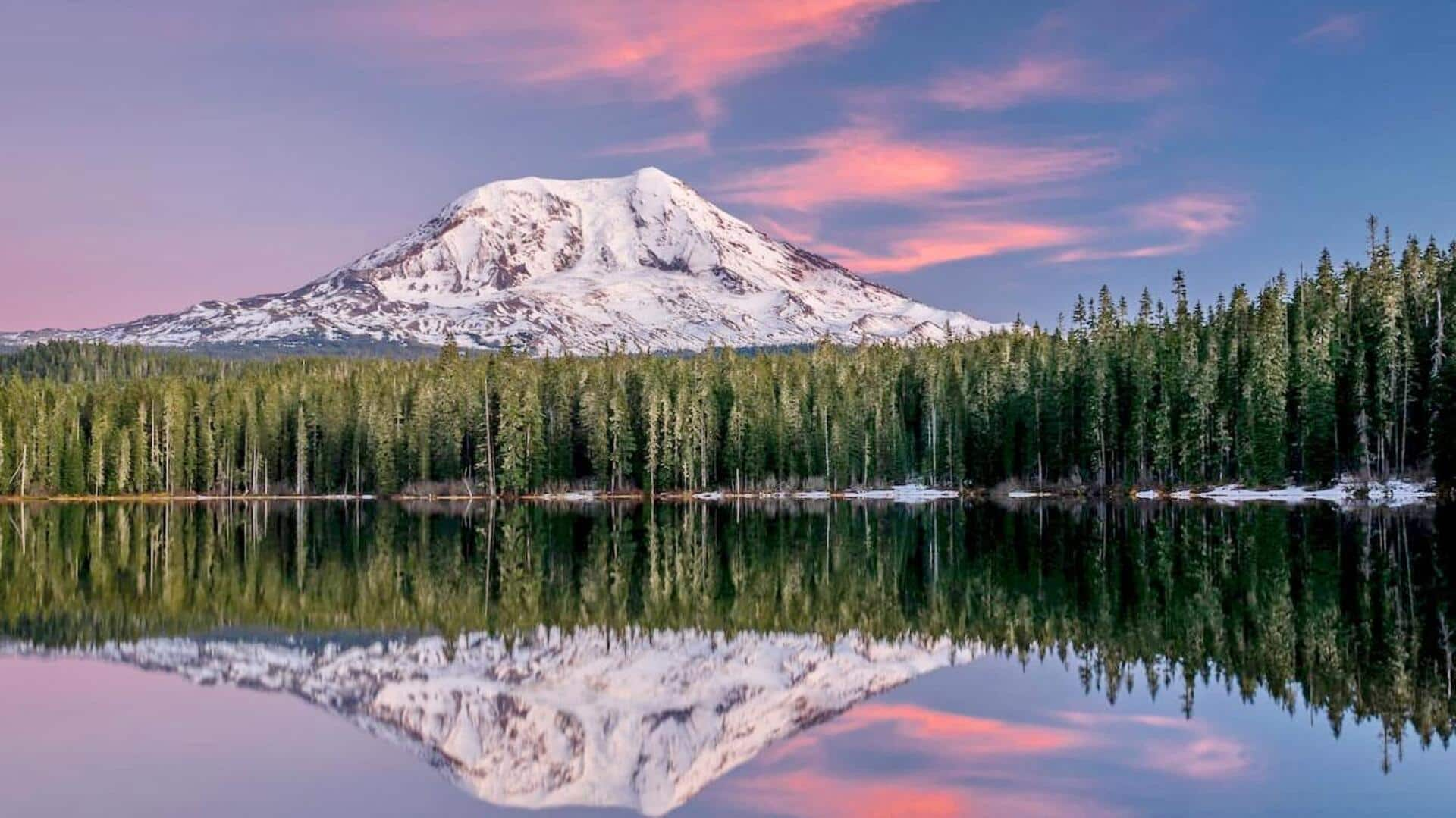
Washington's largest active volcano rattled by earthquakes; scientists on alert
What's the story
Mount Adams, Washington state's largest active volcano, is witnessing a surge in seismic activity. The seismic activity has alarmed scientists, who are closely monitoring the situation. The 12,000-foot stratovolcano has been sleeping for centuries, but recent tremors have prompted renewed monitoring, the DailyMail reported. Located in south-central Washington, about 88.5km southwest of Yakima city center, Adams is a 'high-threat' volcano.
Eruption risk
USGS warns of potential eruption
Though it hasn't erupted in almost 1,000 years, US Geological Survey (USGS) experts have long warned that Mount Adams "will assuredly erupt again." When, though, is impossible to predict. Scientists estimated that an eruption occurred sometime between 3,800 and 7,600 years ago. To keep a check on its eruptions, scientists set up stations to monitor ground movements and seismic activity around the volcano. Last September-October, they recorded nine earthquakes near the volcano of magnitudes 0.9-2.0.
Seismic activity
Experts clarify tremors are normal
Experts have explained that the recent tremors are a part of Mount Adams's "normal background activity," and not a sign of impending eruption. Surprisingly, USGS officials say the biggest threat from Mount Adams isn't an explosive eruption, but avalanches, landslides, and lahars—destructive mudflow or debris flow. "The ice-capped summit conceals large volumes of hydrothermally weakened rock, and future landslides of this weakened rock could generate far-traveled lahars."
What if
What experts are saying
If the volcano were to erupt, it would be unlike the catastrophic explosion of Mount St. Helens in 1980, which claimed 57 lives and coated a large portion of the area with ash, said Holly Weiss-Racine, a geologist with the Volcano Observatory. "It is not a particularly explosive volcano. "It doesn't produce much ash," she explained, adding that it will instead unleash thick lava flows.